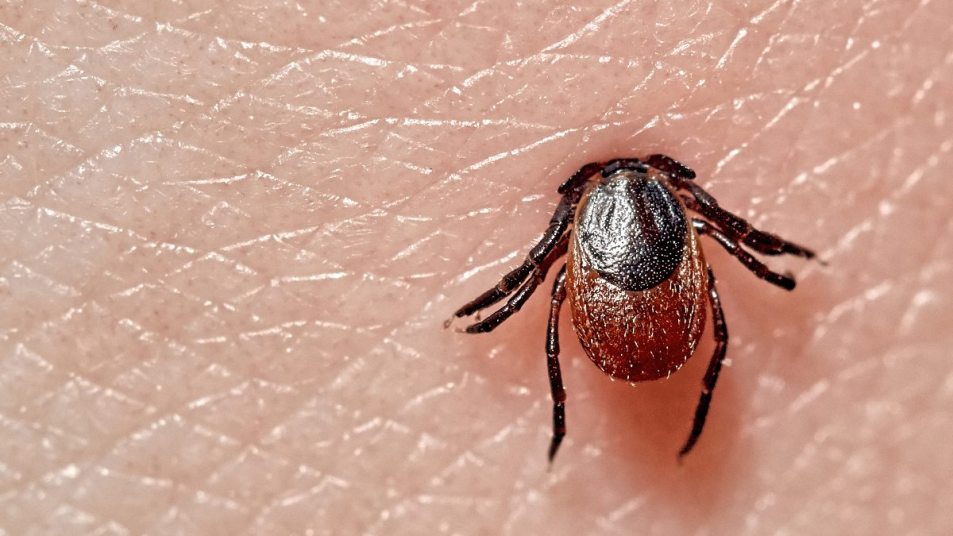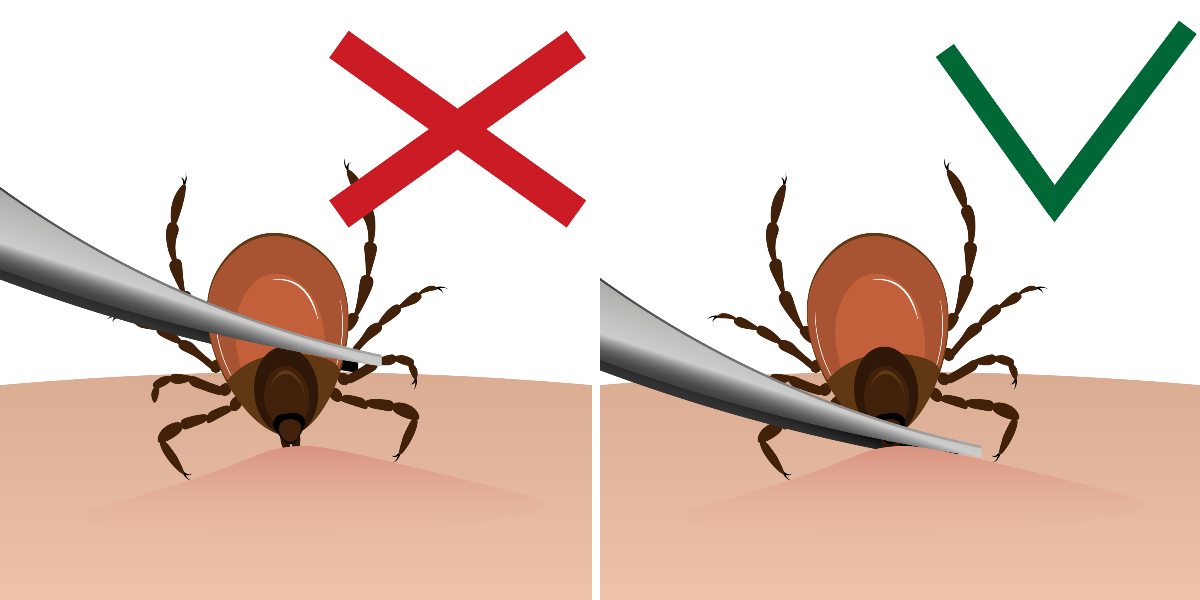Why You Should Never Crush a Tick With Your Fingers (and Other Tick Mistakes You’re Probably Making)
It's better to use tweezers.

If you live in a woodsy or grassy area, or venture outdoors from time to time, ticks are always a possibility. Checking yourself (and your pup!) for those dangerous arachnids after an excursion is extremely important. But are you checking yourself the right way? And what is the best way to remove a tick?
Here’s the first thing to know: Don’t crush a tick between your fingers or fingernails. If you do, you could spread potentially infected blood and fluids on your hands. Fingernails are also prone to tiny abrasions and breaks in the skin, where an infection could enter the body. Plus, it’s harder to salvage a crushed tick if you want to save it and bring it to your doctor for inspection and testing.
A few other don’ts:
- Never squeeze the body of a tick as you remove it. You could accidentally separate the head and the body, leaving the head attached to the skin.
- Avoid crushing the tick as you remove it. If you do, you may squeeze infected blood and fluids back into the wound.
- Don’t use fire, petroleum jelly, nail polish, or other chemicals to try and remove an embedded tick. The tick may respond by regurgitating fluids into the wound. Also, fire or other chemicals may harm your skin.
So, now you know the don’ts, but what are the do’s?
How To Remove a Tick
Thomas Mather, PhD, tick expert, and entomologist, and the Equip-4-Ticks Resource Center recommend that you remove a tick as soon as possible if you notice it on your skin. Here’s the best way to do it:
- Hold onto the tick with sanitized, fine-tipped, pointy tweezers.
- Get as close to the skin as possible.
- Pull straight up in a slow, steady motion.
- Sanitize the area and wash your hands.

If you accidentally leave the head or the mouth parts embedded in the skin, don’t panic. Gently remove them with the tweezers as best you can.
At this point, you may want to dispose of or kill the tick. The CDC recommends that you do so in one of three ways:
- Put it in alcohol.
- Wrap it tightly in tape.
- Flush it down the toilet.
However, both the CDC and Dr. Mather recommend holding onto the tick for testing. To save it, place it in a tightly sealed Ziploc bag. Then, bring or send the tick to your primary care doctor or an independent lab. Follow your doctor’s or the lab’s instructions for submitting it.
Having the tick tested will help you identify its type, how long it may have been attached, and whether it carried an infection.
How To Check Yourself and Your Dog for Ticks
Along with wearing long socks and using bug spray, one of the best ways to prevent Lyme disease is to perform tick checks after every outing. Don’t just check your legs and your arms — Dr. Mather recommends inspecting these places, too:
- Between toes
- Behind knees
- In the groin area
- Around waistline
- In the belly button
- Inside elbow joints and armpits
- In and around the ear
- Around the hairline
- On the scalp
A bonus tip: Check the areas where your clothing meets or binds closely to your skin. Ticks tend to crawl to those areas, stop as soon as they reach skin, and bite there.
Of course, we can’t forget to inspect our pups (and cats) either. In addition to the torso and legs, search these areas:
- The head (dogs love to poke their nose in the grass)
- Paws and between toes
- Between back legs
- Between front legs
- Under the collar area
- In or around the ears
- Base of the tail
The tick removal process for pets is the same as it is for humans — use fine-tipped tweezers and pull straight up.
Hopefully, these tips will keep you well prepared for your next outdoor activity. Just remember to bring along a pair of tweezers, some rubbing alcohol or sanitizer, and a plastic bag.













